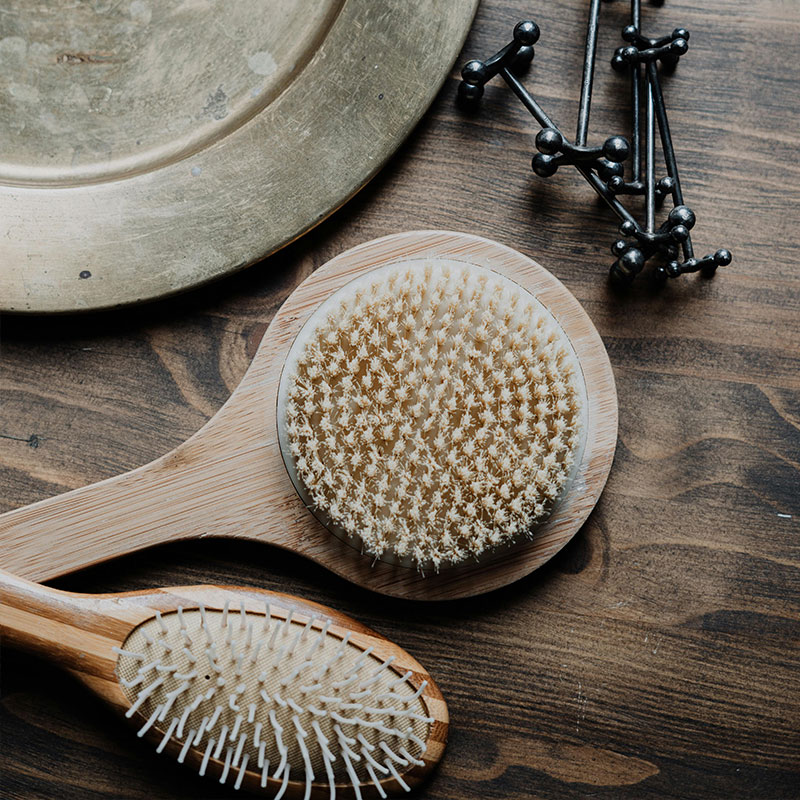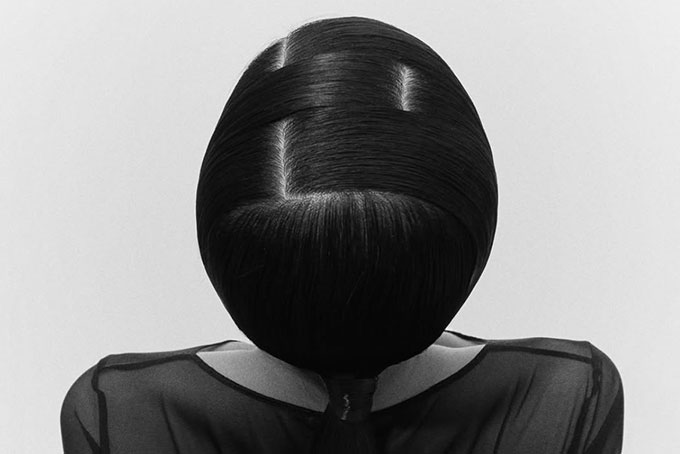Noticing strands of hair collecting on your pillow, shower drain, or hair brush is unsettling at any age—but when it happens in your 20s or 30s, it can feel especially daunting. For many, these are the years when you’re still defining your sense of self and stepping into new chapters of adulthood. To suddenly face significant hair loss during this time can stir up feelings of self-consciousness and even grief, as hair often feels closely tied to identity and femininity. What’s important to know, however, is that early hair loss is more common than most realise—and with the right understanding and care, it doesn’t have to be the end of feeling confident in your skin.
The emotional toll
Noticing your hair thinning in your 20s or 30s can feel like an unexpected blow. According to experts, it’s becoming increasingly common for younger women to seek help. Dermatologist at Singapore General Hospital, Dr Laura Hui, shares, “It has become more common to see younger women seeking medical consults for their hair loss. Our hair frames our face and for many, our hair is one of the few parts of our body that we can control to project how we see ourselves and how we want the world to see us. It can be closely tied to identity, self-confidence and in females— femininity. Experiencing hair loss regardless of age can potentially be emotionally distressing.”
Trichologist Leonica Kei, founder of Leonica K Trichology, echoes this sentiment. “General hair loss and hair thinning can happen at a very young age, but it’s a very gradual process, and you don’t see an alarming amount of hair fall; so you’re just suspecting that your hair is a bit thin, but you don’t see the evidence. When people are facing early hair thinning, they might not be aware of it. So they don’t feel a sense of urgency to seek treatment.”
How do I spot it?
If you’re not well-versed in scalp health, spotting the early signs can be tricky. Dr Laura Hui explains, “Early signs can include increased shedding during brushing, combing or washing, a widened hair parting, or visible thinning around the crown or temples. Sometimes, noticing more hair fall on pillows or in the shower can also be a clue.” Leonica Kei offers a simple test that can be done, “The ponytail effect: if you have long hair and tie your hair up—you’ve used the hair tie a few times, and gradually you feel that it’s getting very loose and you need to wrap it around the hair more—that is one way you might notice your hair is getting thinner.”
One of the biggest reasons early hair loss goes unnoticed is because it can often be mistaken for simple breakage. Both result in seeing more strands around you—on your clothes, pillow, or in the shower—but they stem from very different issues. “Hair fall typically happens at the root, while breakage occurs along the shaft and can result in shorter, uneven/frayed pieces.” Dr. Hui clarifies, “Excessive hair breakage can be in part due to mechanical damage from harsh handling, heat styling, or chemical exposure, for example.”
Types of hair loss
One of the most challenging things about hair loss is that it’s rarely caused by just one factor. Unlike a simple breakage from styling damage, shedding from the scalp can be a sign of deeper underlying conditions—sometimes even medical ones. Dr Hui lists the most common causes:
- Androgenetic alopecia (genetic pattern baldness)
- Telogen effluvium (often caused by stress, illness, or changes like pregnancy)
- Alopecia areata (an autoimmune condition)
- Traction alopecia (tight hairstyles)
- Nutritional deficiencies (e.g. iron)
- Scarring alopecias (inflammatory conditions, can be autoimmune)
Postpartum hair loss can be a common experience for women in their 20s and 30s as they start families. “The most common reason for visiting us would be postpartum hair loss.” Kei notes, “Because postpartum hair loss can be quite visible, and when women become pregnant, they start to read up on things they should be prepared for. We do get many clients coming to see us sometimes before they deliver or after. Usually when people are pregnant, their estrogen levels are very high. While their hair and skin are doing well, there are some people who develop an itchy scalp and acne because of the hormone changes.” Dr Hui adds, “Postpartum hair loss is a type of telogen effluvium triggered by hormonal changes after childbirth, and often resolves spontaneously 6–12 months postpartum. This is unlike other types of hair loss which tend to be more chronic and progressive.”
Another form, alopecia areata, is sudden and often more alarming. “It happens overnight and looks patchy, usually of 50-cent or 20-cent coin size. It can be pea-sized as well—it can be single or multiple and happen to any part of the scalp.” Kei explains, “Alopecia areata is an autoimmune disorder where your white blood cells could mistake your hair follicles as a foreign object and attack the hair. So the hair follicles are intact, but the hairs are broken beneath the skin. Overnight, you could have patches of hair falling out, and your scalp becomes smooth.” While alopecia areata can feel shocking when it strikes without warning, understanding its autoimmune nature helps take away some of the mystery—reminding women in their 20s and 30s that they are not at fault, and that early support can make a real difference in managing the condition.
Hair loss can be reversible
The good news is that not all hair loss is permanent. Dr Hui shares, “The reversibility of hair loss depends on the underlying cause. Conditions like telogen effluvium or stress-related and postpartum shedding are typically temporary and reversible. Other common causes of non-scarring alopecia such as androgenetic alopecia (female patterned baldness) or alopecia secondary to nutritional deficiencies can be managed with medical therapy, although full regrowth might not always be seen.”
“So long as the hair follicles are alive, and it’s not like a scarring tissue the hair loss is almost always reversible, and it’s about what extent it can be reversed.” Kei affirms.

The reversibility of hair loss depends on the underlying cause.
cottonbro studios
Steps to take
When it comes to hair loss, timing matters. Both specialists emphasise the importance of seeking professional help early, rather than waiting until the condition worsens. Kei mentions the importance of seeing a specialist, “The first step forward would definitely be consultation, so that you have an idea to see what the cause of the hair thinning is. Then you can also find out what plans can fit into your budget and schedule.”
Dr Hui outlines what you can expect from a medical evaluation, “Diagnosis involves taking a detailed history and scalp examination. At times, a hair pull test and dermoscopy/trichoscopy (examination of the scalp using a dermatoscope) is also done. Blood tests or scalp biopsies may also be performed to evaluate underlying causes such as thyroid dysfunction, iron deficiency, or autoimmune conditions.”
Possible treatments include:
- Topical treatments like minoxidil for androgenetic alopecia
- Oral medications like spironolactone or finasteride for androgenetic alopecia
- Corticosteroid injections for alopecia areata or autoimmune scalp conditions
- Low level laser therapy for androgenetic alopecia
- Hair transplants
Scalp health matters
When dealing with hair loss and maintenance, healthy hair starts with a healthy scalp. Ivan Cheng, co-founder of Jing Botanics, explains, “When the scalp is nourished and balanced, circulation, oil production, and the microbiome work together to create the right environment for strong follicles and healthy hair. If that balance is disrupted, follicles weaken and shedding accelerates. Put simply, hair fall is often a sign the scalp itself needs more care.”
While treatment is just the first step in addressing hair loss, what comes after is just as crucial. Proper post-treatment care maintains results, prevents further damage, and creates the right environment for new hair to grow. Dr Laura Hui emphasises simplicity, “Maintain a simple and gentle hair care routine, avoid tight hairstyles, and avoid excessive heat and chemical styling.” After professional intervention, it’s not about piling on products or aggressive treatments; it’s about protecting the scalp and follicles from stress. “After treatment, the scalp needs a calm, balanced environment to heal.” Cheng adds, “Gentle cleansing with a pH-appropriate shampoo helps prevent irritation, while a lightweight serum can soothe inflammation and support follicle recovery. Once the scalp is ready, start with light finger massages to boost circulation, then progress to Gua Sha for deeper stimulation.” This stepwise approach strengthens the scalp without overwhelming it. Massage and circulation-boosting techniques enhance recovery—but only once the scalp barrier is stable. Consistency, not intensity, is key.
Lastly, it is important to make sure you are not overloading too much product on the scalp. “It’s more common than people think,” Cheng warns. “Excess oils, leave-ins, dry shampoos, or styling products can clog follicles, disrupt the scalp’s microbiome, and throw off its pH… The key isn’t using more, but choosing wisely: clean, lightweight, microbiome-friendly, pH-balanced formulas that keep the scalp clear and healthy.”
In terms of ingredients to look out for to promote scalp health, Dr Hui recommends looking for:
- Minoxidil: promotes hair growth
- Salicylic acid: clears dandruff and thick scale
- Selenium disulphide / Zinc pyrithione / Ketoconazole: helps oily scalp, seborrhea, dandruff, or scalp dermatitis
With timely intervention, accurate diagnosis, and consistent scalp care, most forms of hair loss can improve or reverse. Experts stress to not wait—early professional advice can make all the difference.
